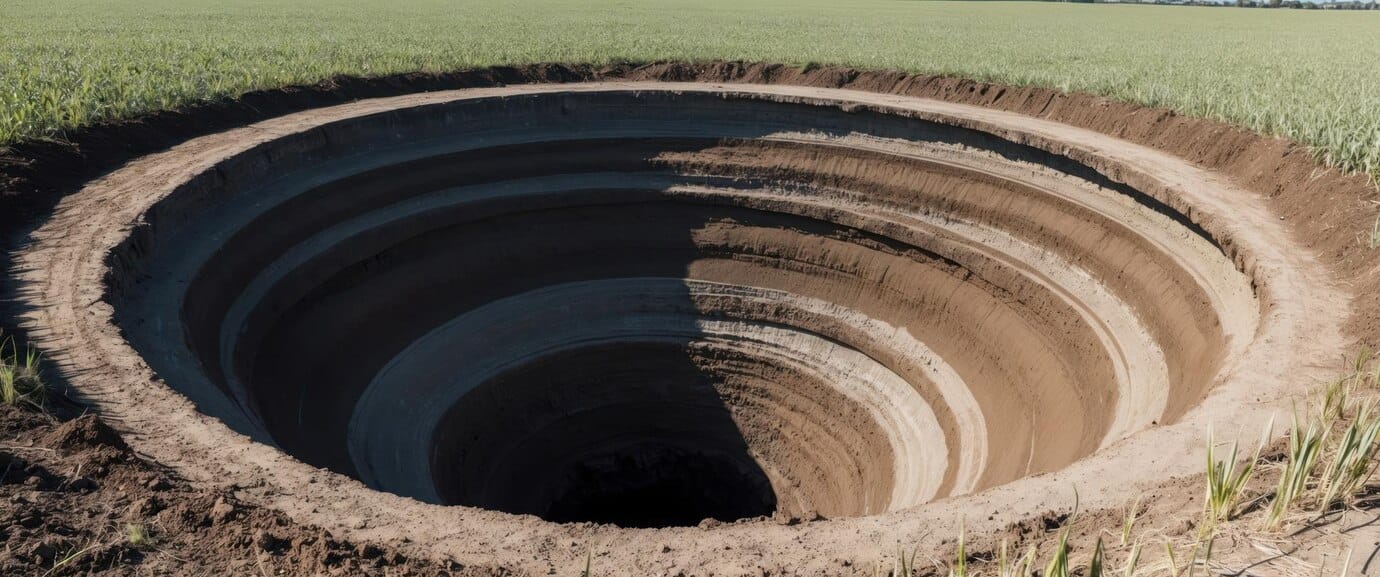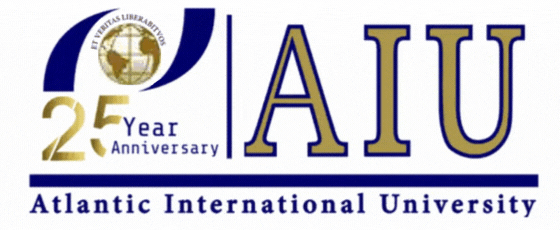- RESEARCHDistance Learning at AIU is enhanced by vast academic resources and innovative technologies build into the Virtual Campus: Hundreds of self-paced courses with video lectures and step by step lessons, thousands of optional assignments, 140,000 e-books, the Social Media & Networking platform allowing collaboration/chat/communications between students, and MYAIU develop students holistically in 11 areas beyond just academics.
- PROGRAMS OFFERED
- Areas of Study
- Courses and Curriculum
- Open Courses
- Register for a Program
- Associate Program
- Associate in Addiction Counseling
- Associate in Agriculture Food And Resources
- Associate in Anti Terrorism Security
- Associate in Behavior Analysis In Special Education
- Associate in Bioethics
- Associate in Climatology
- Associate in Cultural Theological Communication
- Associate in Culinary Arts
- Associate in Ecotechnology
- View all Associates Programs
- Bachelor Program
- Bachelors in Community Development
- Bachelors in Environmental Science
- Bachelor in Education (B.Ed, BS)
- Bachelors in Economics
- Bachelors in Entrepreneurship
- Bachelors in Financial Administration
- Bachelors in Human Resource Management
- Bachelors in Linguistics
- Bachelors in Nutritional Science
- Bachelors in Occupational Health and Safety
- Bachelors in Psychology
- View all Bachelor Programs
- Doctorate Program
- Doctor | of Biology (PhD)
- Doctorate in Business Administration (DBA, PhD)
- Doctor of Economics (PhD)
- Doctor of Electrical Engineering (D.Sc, PhD)
- Doctor of Finance (PhD)
- Doctorate in International Relations
- Doctorate in Information Technology (D.Sc)
- Doctor of Legal Studies (PhD)
- Doctor of Project Management (PhD)
- Doctor of Sociology (PhD, D.Sc)
- Doctorate in Sustainable Natural Resources Management
- View all Doctorate Programs
- Master Program
- Postdoctoral Program
- Postdoctoral in Animal Science
- Postdoctoral in Anti Terrorism Security
- Postdoctoral in Behavior Analysis In Special Education
- Postdoctoral in Bioethics
- Postdoctoral in Blockchain Technology and Digital Currency
- Postdoctoral in Business Management
- Postdoctoral in Cloud Computing
- Postdoctoral in Computer Engineering
- View all Postdoctoral Programs
AIU offers a wide range of majors in areas including the Arts, Business, Science, Technology, Social, and Human studies. More than 120 degrees and programs are available for adult learners at the associate’s, bachelor’s, master’s, doctoral and postdoctoral level. - VIRTUAL CAMPUS
Distance Learning at AIU is enhanced by vast academic resources and innovative technologies build into the Virtual Campus: Hundreds of self-paced courses with video lectures and step by step lessons, thousands of optional assignments, 140,000 e-books, the Social Media & Networking platform allowing collaboration/chat/communications between students, and MYAIU develop students holistically in 11 areas beyond just academics.
- ALUMNI
The world is YOUR campus!”, that is the message of AIU’s month magazine Campus Mundi. Hear the voices and see the faces that make up AIU. Campus Mundi brings the world of AIU to you every months with inspirational stories, news and achievements by AIU members from around the world (students and staff are located in over 200 countries).
A Gaping Chasm in Alton: The Unfolding Story of Illinois' Massive Sinkhole

How do different geological conditions, such as the presence of soluble bedrock, influence the formation and development of sinkholes? Provide examples of regions where these conditions are prevalent and discuss their specific sinkhole risks.
What are the primary methods used in ground monitoring, and how can they be improved to better detect and prevent subsidence and sinkhole formation? Analyze current technologies and propose advancements that could enhance early detection and risk management.
In what ways can public awareness and education about sinkholes and ground stability contribute to community safety? Evaluate the effectiveness of current public awareness programs and suggest strategies to increase community engagement and preparedness.
For your essay, address the following questions based on the provided information and your own research. Discuss the influence of geological conditions on sinkhole formation, explore the current methods and potential advancements in ground monitoring, and evaluate the role of public awareness in enhancing community safety. Use examples and evidence to support your arguments and consider how interdisciplinary approaches might improve both prevention and response strategies. Your essay should demonstrate a thorough understanding of the subject matter and offer well-reasoned recommendations for addressing the challenges posed by sinkholes and related geological hazards.
(Login to your student section to access the AIU Additional Resources Library.)
A Gaping Chasm in Alton: The Unfolding Story of Illinois' Massive Sinkhole
On a seemingly ordinary Wednesday morning, residents of Alton, Illinois, witnessed a dramatic and unsettling event that could easily be mistaken for a scene from a disaster movie. At 9:18 a.m. on June 26, a massive sinkhole, stretching 100 feet in width and 30 feet in depth, suddenly emerged in Gordon Moore Park, a popular recreational area located just 18 miles north of St. Louis, Missouri.

The sinkhole, which devoured a light pole and several benches, was captured on a nearby security camera, presenting a terrifying spectacle of earth and debris collapsing into a gaping void. For those intrigued by the science behind such geological phenomena and the critical role of geology in understanding and mitigating these events, consider exploring the Bachelors in Geology offered by AIU, where you can delve deeper into the fascinating study of Earth sciences and contribute to advancements in this vital field.
The Incident: A Sinkhole Unveiled
The sinkhole’s dramatic appearance left a significant mark on Gordon Moore Park. Security footage from the park showed the ground between two soccer and football fields suddenly give way, swallowing a light pole and causing plumes of smoke to billow as the structure and surrounding soil were consumed. The scene was reminiscent of an explosion, as described by Alton Parks and Recreation Director Michael Haynes, who noted, “It looks like something out of a movie, right? It looks like a bomb went off.”
Despite the startling visuals, luck was on the side of park-goers that morning. No one was on the fields, and thus, no injuries were reported. The swift and fortunate timing of the incident helped avert a potential tragedy.
Root Causes: Mine Collapse and Ground Subsidence
Initial investigations revealed that the sinkhole’s origin lay deep beneath the surface. Alton Parks and Recreation Director Michael Haynes confirmed that the sinkhole resulted from a “mine collapse deep underground.” The responsible party, New Frontier Materials, owns an underground mine situated approximately one kilometer west of the park. The company’s spokesperson explained that the collapse occurred due to issues related to ground subsidence above the mine shaft.
Ground subsidence is a phenomenon that occurs when the ground above a subterranean void or weakened area collapses. In this case, the underlying mine, which had been excavated for various materials, may have experienced structural failure, leading to the sinkhole’s sudden formation. The spokesperson for New Frontier Materials assured the public that the affected area had been secured and would remain off-limits while inspectors and experts assess the situation and conduct necessary repairs.
The Mining Connection: New Frontier Materials’ Role
New Frontier Materials, the mining company involved, has come under scrutiny following the incident. As the owners of the underground mine, they are responsible for addressing the consequences of the collapse. The company has expressed its commitment to safety and has taken steps to mitigate the impact on the community. Their spokesperson stated, “Safety is our top priority. We will work with the city to remediate this issue as quickly and safely as possible to ensure minimal impact on the community.”
For those interested in understanding the technical aspects of soil stability and how such incidents can be prevented, AIU offers a live class in ‘Introduction to Soil Mechanics’. This course provides valuable insights into the principles of soil behavior, foundation design, and ground stability, equipping students with the knowledge needed to tackle real-world challenges in geotechnical engineering. By exploring these critical concepts, future professionals can contribute to safer mining practices and better community safety measures.
The Mine Safety and Health Administration (MSHA) has been informed of the incident, and the company is cooperating with the agency to ensure compliance with safety regulations. The company’s prompt response to secure the area and conduct repairs reflects their dedication to addressing the situation responsibly.
Sinkholes and Their Formation: A Scientific Perspective
Sinkholes, while relatively rare, are not unprecedented phenomena. They occur when natural processes erode the underlying soils and bedrock, creating a void that eventually leads to the ground above collapsing. Several factors can contribute to the formation of sinkholes:
- Geological Conditions: Sinkholes often form in areas with soluble bedrock, such as limestone, gypsum, or salt. These rocks can dissolve over time due to natural processes, creating underground voids.
- Groundwater Depletion: The depletion of groundwater can also trigger sinkholes. When groundwater levels drop, the support for the overlying ground is reduced, increasing the likelihood of subsidence. This issue has been observed in various regions, including parts of the U.S. East Coast, where groundwater depletion has contributed to land subsidence.
- Human Activities: Activities such as mining, drilling, and construction can exacerbate the risk of sinkholes. The excavation of materials from underground mines, as in the case of New Frontier Materials, can destabilize the ground and lead to collapse.

The sinkhole at Gordon Moore Park serves as a stark reminder of the potential dangers associated with underground mining and ground subsidence. While sinkholes cannot always be predicted with absolute certainty, there are measures that can be taken to mitigate their impact:
- Regular Inspections: Mining companies should conduct regular inspections of underground operations to identify and address potential weaknesses. Early detection of issues can help prevent catastrophic failures.
- Ground Monitoring: Implementing ground monitoring systems can provide valuable data on ground stability and subsidence. These systems can alert authorities to potential risks and allow for timely intervention.
- Public Awarenes: Educating the public about the risks associated with sinkholes and other ground hazards can enhance safety. Communities should be informed about the signs of ground instability and the steps to take in case of an emergency.
- Regulatory Compliance: Ensuring compliance with safety regulations and industry standards is crucial for preventing sinkholes and other mining-related incidents. Regulatory agencies, such as the MSHA, play a vital role in enforcing these standards.
Community Impact and Recovery
The impact of the sinkhole on the Alton community extends beyond the immediate physical damage. The closure of Gordon Moore Park, a beloved recreational space, affects local residents who rely on the park for sports and outdoor activities. The process of remediation and repair will be crucial in restoring the park to its former state.
Local officials and community members will need to work together to address the challenges posed by the sinkhole. The park’s recovery will involve not only repairing the physical damage but also ensuring that safety measures are in place to prevent similar incidents in the future. For those interested in playing a role in understanding and mitigating such geological hazards, pursuing a Bachelor’s degree in Geophysical Sciences at AIU can provide valuable insights and skills. This program offers a deep dive into the study of Earth’s physical properties and processes, equipping students with the knowledge to contribute to disaster preparedness and prevention efforts, ultimately helping communities like Alton recover and better safeguard against future events.
Conclusion: A Cautionary Tale
The sinkhole at Gordon Moore Park is a vivid reminder of the hidden risks associated with underground activities and natural processes. While the incident fortunately resulted in no injuries, it underscores the importance of proactive measures to ensure public safety and environmental protection. As Alton and New Frontier Materials navigate the aftermath of this event, the lessons learned will hopefully contribute to safer practices and greater awareness of the potential hazards lurking beneath the surface.

For those looking to deepen their understanding of the principles that underpin such events, AIU offers a live class in ‘Geotechnical Engineering’. This course delves into the study of soil and rock mechanics, foundation design, and the evaluation of ground stability. By equipping students with advanced knowledge and practical skills in geotechnical engineering, AIU helps prepare the next generation of professionals to address and mitigate similar challenges, ultimately contributing to safer and more resilient communities.
For those interested in diving deeper into the science of sinkholes, the implications of groundwater depletion, and strategies for mitigating similar risks, explore the resources and articles below to gain a more comprehensive understanding of this fascinating and crucial topic.
Metabolic sinkholes: Histones as methyl repositories
Introduction to Soil Mechanics – Live Class
Bachelors in Geophysical Sciences
References
Massive Sinkhole Forms on Soccer Field in Illinois; What Caused It To Form?
Sinkhole Forms on Soccer Field in Illinios
Giant Skinhole Swallows the Center of a Soccer Field
Massive sinkhole swallows Illinois soccer field after mine collapses, official say
Giant Sinkhole Swallows the Center of a Soccer Field Built on the Top of a Limestone Mine
Reminder to our Dear Students,
Please ensure you are logged in as a student on the AIU platform and logged into the AIU Online
Library before accessing course links. This step is crucial for uninterrupted access to your learning
resources.
AIU Success Stories







Contact Us Today!
Begin Your Journey!
AIU’s Summer of Innovation and Growth gives you the ability to earn up to $5000 in tuition credit by completing free lessons and courses.
Whether you’re looking to acquire new skills, advance your career, or simply explore new interests, AIU is your gateway to a world of opportunities. With free access to 3400 lessons and hundreds of courses the ability to earn credits and earn certificates there’s no better time to start learning.
Join us today as a Guest Student and take the first step towards a brighter, more empowered future.
Explore. Learn. Achieve.

Contact Us
Atlantic International University
900 Fort Street Mall 905 Honolulu, HI 96813 [email protected]
Quick Links
Home | Online Courses | Available Courses | Virtual Campus | Career Center | Available Positions | Ask Career Coach | The Job Interview | Resume Writing | Accreditation | Areas of Study | Bachelor Degree Programs | Masters Degree Programs | Doctoral Degree Programs | Course & Curriculum | Human Rights | Online Library | Representations | Student Publication | Sponsors | General Information | Mission & Vision | School of Business and Economics | School of Science and Engineering | School of Social and Human Studies | Media Center | Admission Requirements | Apply Online | Tuition | Faculty & Staff | Distance Learning Overview | Student Testimonials | AIU Blogs | Register for Program | Privacy Policy | FAQ



















